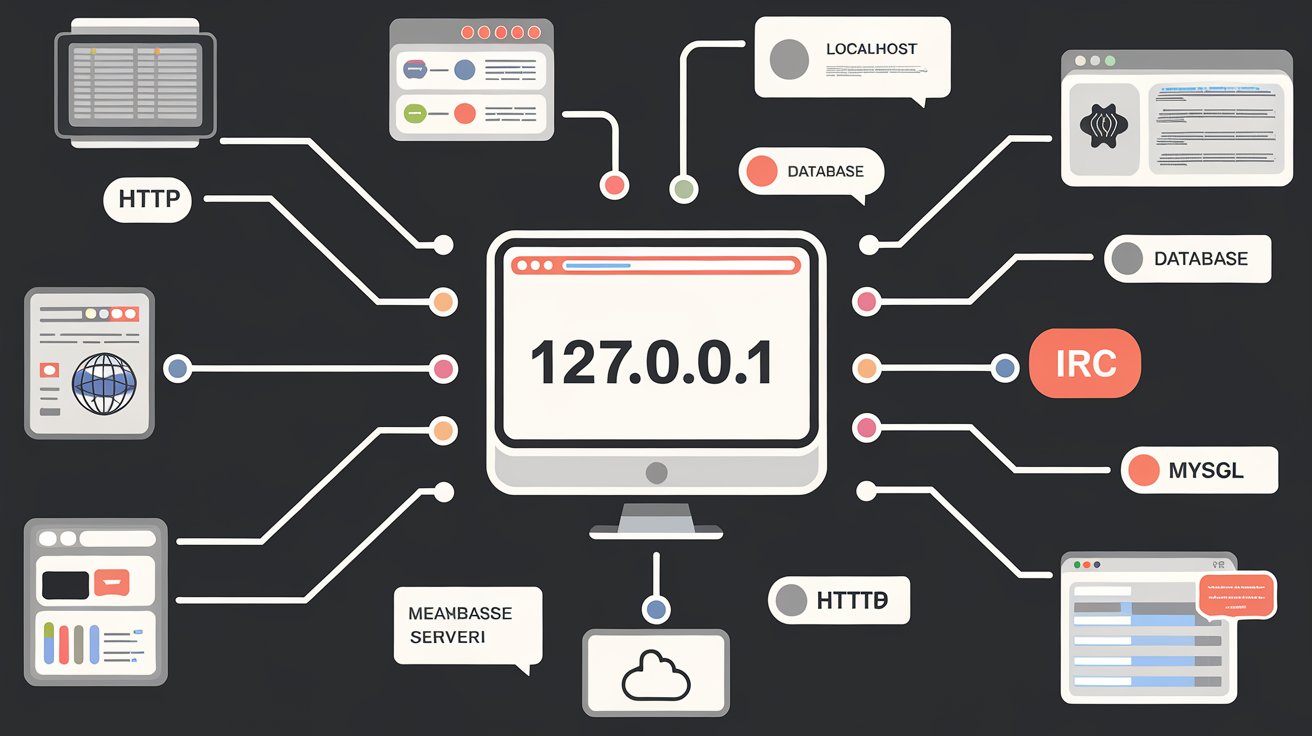The term 127.0.0.1:62893 might appear cryptic at first glance, especially if you need to become more familiar with networking concepts. However, this combination of numbers and a colon is more than just random digits. It represents a vital aspect of how computers communicate with themselves and manage different services internally. This article will take an in-depth look at 127.0.0.1:62893, exploring what it is, how it functions, and why it’s important in various scenarios.
What Is 127.0.0.1:62893?
127.0.0.1:62893 is not just a random string of numbers. It signifies a connection to a service running on your local machine. Let’s break down each component to understand it better.
The Loopback Address: 127.0.0.1
The first part of 127.0.0.1:62893 is 127.0.0.1, known as the loopback address. In networking, the loopback address is a special IP address reserved for communicating with your own computer. When you direct any request to 127.0.0.1, you’re telling your computer to send that request back to itself.
In simpler terms, it’s like talking to yourself in a networked environment. This address is commonly used for testing and development purposes. When developers create web applications, they often use 127.0.0.1 to test their work locally before deploying it to the internet.
The Port Number: 62893
The second part of 127.0.0.1:62893 is 62893, which represents a port number. Ports are like doors or gateways on your computer that allow different services or applications to communicate with one another. Each port is assigned a number, and different applications are configured to use specific ports to send and receive data.
In the case of 127.0.0.1:62893, 62893 is the port number being used by a particular service on your local machine. The combination of 127.0.0.1 and 62893 ensures that the data sent to this address reaches the correct service running locally.
The Role of 127.0.0.1:62893 in Various Scenarios
Now that we’ve broken down the components of 127.0.0.1:62893 let’s explore some common scenarios where this connection might be used.
Also Read: Your Topics | Multiple Stories: Forbes A Deep Dive
Web Development
One of the most common uses of 127.0.0.1:62893 is in web development. When developers create websites or web applications, they often run web servers on their local machines to test their code. Using 127.0.0.1 allows them to view the website as if it were live without exposing it to the internet. The port number, in this case, 62893, would correspond to the specific web server or application they are testing.
For instance, a developer might set up a local server to run on 127.0.0.1:62893 and then open their browser to view their work. This process ensures that any changes they make are tested in a safe, controlled environment.
Network Testing
Network administrators and IT professionals often use 127.0.0.1:62893 to test network configurations and diagnose issues. By directing traffic to 127.0.0.1, they can verify that the computer’s network stack is functioning correctly, which can help identify problems with local applications or services.
The specific port number, 62893, might be used in scenarios where a particular service is under scrutiny. For example, if a networked application isn’t responding as expected, testing it locally on 127.0.0.1:62893 can help determine if the issue lies within the local setup or elsewhere.
Remote Access and Local Communication
In some cases, 127.0.0.1:62893 is used by applications to facilitate communication between different parts of the same system. For example, a local database might be accessed by a web application using 127.0.0.1 as the host address and 62893 as the port number. This setup ensures that the communication remains within the local machine, improving security and performance.
Why 127.0.0.1:62893 Matters
Understanding 127.0.0.1:62893 is crucial for anyone involved in IT, web development, or networking. This simple combination of numbers represents a fundamental aspect of how computers manage internal communications. Whether you’re testing a new website, diagnosing a network issue, or configuring a local service, 127.0.0.1:62893 plays a role.
But why does it matter? The importance of 127.0.0.1:62893 lies in its versatility and reliability. It’s a tool that developers, network administrators, and IT professionals use daily to ensure that their systems run smoothly. By leveraging 127.0.0.1:62893, they can create, test, and manage services in a controlled environment without the risk of exposing them to external threats.
Common Issues and Troubleshooting with 127.0.0.1:62893
While 127.0.0.1:62893 is a powerful tool, it’s not without its challenges. Users may sometimes encounter issues when working with this address and port combination. Here are some common problems and how to address them:
Port Conflicts
One of the most frequent issues with 127.0.0.1:62893 is port conflicts. If another service on your computer is using port 62893, you might not be able to start the service you intend to use. In such cases, you’ll need to either change the port number for one of the services or stop the conflicting service.
Firewall Restrictions
Firewalls can also cause problems with 127.0.0.1:62893. If your firewall is configured to block traffic on port 62893, the service you’re trying to run might not function correctly. To resolve this, you’ll need to adjust your firewall settings to allow traffic on this port.
Service-Specific Issues
The specific service using 127.0.1:62893 might have its own set of problems. For example, a misconfigured web server or a corrupted database could prevent the service from running smoothly. In these cases, checking the service’s logs and documentation can help you pinpoint the issue.
Conclusion
In summary, 127.0.0.1:62893 is more than just a string of numbers—it’s a key component of local network communication. Whether you’re developing a new application, testing your network, or managing local services, understanding how 127.0.0.1:62893 works is essential. This powerful tool allows you to interact with your computer in a controlled, secure manner, making it a vital part of any IT or development toolkit.
By mastering 127.0.0.1:62893, you gain insight into how computers handle internal communication, and you equip yourself with the knowledge needed to troubleshoot and optimize local services. In the ever-evolving world of technology, such understanding is invaluable, helping you to stay ahead of the curve and ensure that your systems function smoothly.















